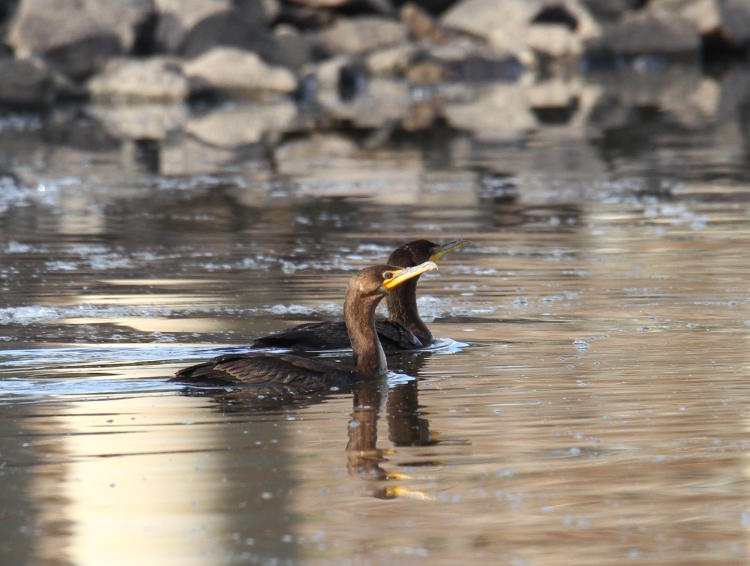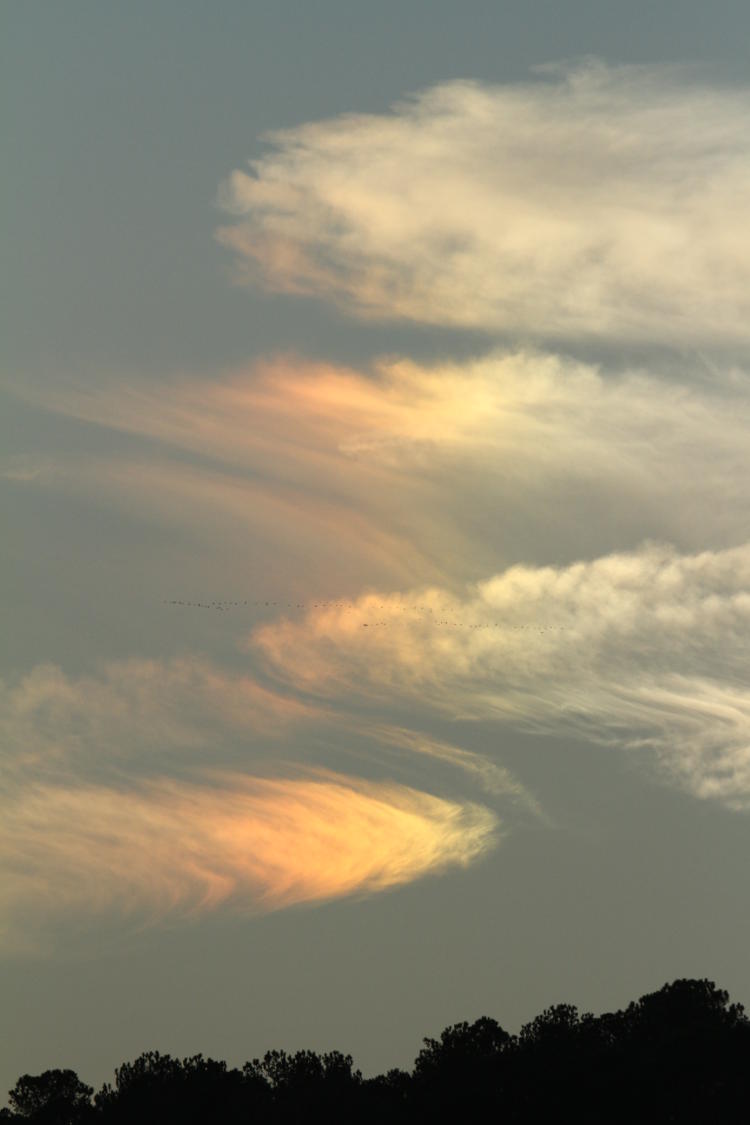This past Thursday (meaning the 26th) spelled another outing with the Intemperate Al Bugg, and we’re in the middle of a nice warm spell. This means being out shooting isn’t uncomfortable, but doesn’t do much for photo subjects since most of the birds have already fuck-this’d south (or souther) and the arthropods and reptiles have largely holed up to binge on Netflix. Still, there were a handful of things to chase, if by ‘chase’ I mean, ‘stand and observe, and occasionally shift to a better vantage.’ We don’t tend to go loping off through the underbrush after fleeing jaguars too often.
And what Jordan Lake had to offer was… cormorants. Lots and lots of cormorants.

While we heard the croak of great blue herons on a few occasions, they never came within several hundred meters. Meanwhile, the double-crested cormorants (Phalacrocorax auritus) could be seen passing overhead in small groups and great flocks, and perched on the rocky causeway, and swimming out in the open occasionally vanishing beneath the surface in pursuit of fish. None of them wanted to get usefully close either, but at least they were within reach of the longer lenses.

Of the numerous overhead passes, I chose this one just for the line of near-silhouettes, almost a Muybridge thing (which, just by saying that, makes it classier of course.) While below, a solitary cormorant drifted around almost aimlessly after apparently failing to find any slow-enough fish.

There was something a little curious about the water quality, visible faintly here, because it seemed unusually thick, or laden with something; any bubbles formed by turbulence seemed to stick around indefinitely. I didn’t bother to take samples or splash my hand in it to get a firsthand feel, totally forgetting that I’m in search of content at this time of the year, so you’ll just have to go on my description and make do with that.
Yet we were also out there for sunset, which stubbornly refused to occur any earlier and stuck tightly to its own schedule, so as the time hove closer we switched positions to get a better view.

Sundogs – those little patches of rainbow color occasionally appearing wide to the left and right of the sun – were visible throughout much of the afternoon, and as the sun dropped lower and the haze thickened, they took on a more distinct but less colorful quality in the thin clouds. Sundogs are an effect of high-altitude ice crystals, but the clouds visible that day seemed to be a lot lower. Granted, given the sun being 147,000,000 km away, with the clouds ranging between, say 2 to 20 km, the difference between high-altitude ice crystals and low cloud cover is trivial. Meanwhile, as the sun lowered/stayed the same while the earth turned, the colors got a bit richer.

This is magnified a bit, shot at 330mm focal length, but I still missed a small detail that you can just make out here, or better below in a tighter crop of the same image.

Yep, there’s a very distant flight of birds captured unknowingly in that frame, probably cormorants again (given the untidy linear nature of the flock,) and certainly kilometers off.
As we waited to see what the sky would develop, I noticed that the air was filled with numerous ‘midges,’ for want of better identification, slow and tending to not-quite-hover nearby as I stood on the boat docks. I amused myself by occasionally trying to snag a sharp image of one in midair and did reasonably well in that regard, focusing manually with the 17-85 IS lens.

For this one, I was actually trying to incorporate the background colors alongside the insect, but in other circumstances I concentrated on just the fly itself. This one deserves a closer look:

 I didn’t put a lot of effort into trying to identify the species, especially since all I have are silhouettes in the approaching gloom and they all resisted my idle attempts to catch one in hand. I found the anatomy visible in my images to be curious; I’m almost positive those are not antennae out the front, but the forelegs, and you can compare this image and this one to see better detail (and one of those might actually be the species that I was photographing.) But you gotta admit, it’s a little disturbing to see the forelegs bending back in that manner, more so when you realize the insects were simply drifting through the air at a couple centimeters per second at best – not exactly hurtling. I am avoiding all tacky jokes about limp wrists.
I didn’t put a lot of effort into trying to identify the species, especially since all I have are silhouettes in the approaching gloom and they all resisted my idle attempts to catch one in hand. I found the anatomy visible in my images to be curious; I’m almost positive those are not antennae out the front, but the forelegs, and you can compare this image and this one to see better detail (and one of those might actually be the species that I was photographing.) But you gotta admit, it’s a little disturbing to see the forelegs bending back in that manner, more so when you realize the insects were simply drifting through the air at a couple centimeters per second at best – not exactly hurtling. I am avoiding all tacky jokes about limp wrists.
I will close with one of the last sunset images, when the sky never really developed any vivid colors but nonetheless kicked it in a little. You can see the lower clouds have already escaped the light of the sun and have gone slate grey, one of the reasons that I said they did not appear to be very high altitude. I went vertical to enhance that curve of clouds and provide a modicum of depth to the image, the idea of it stretching off into the distance – ya make the most of what ya get.




















































